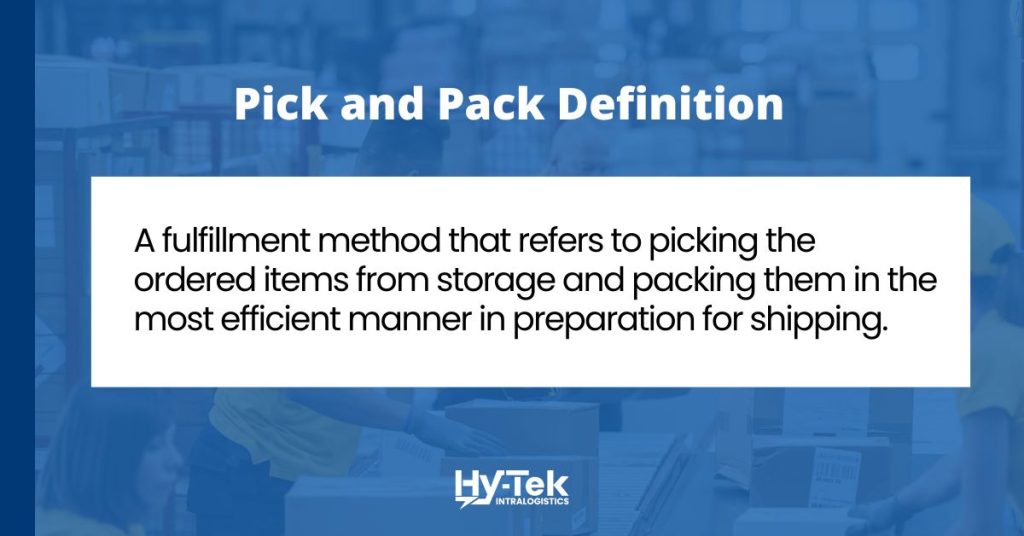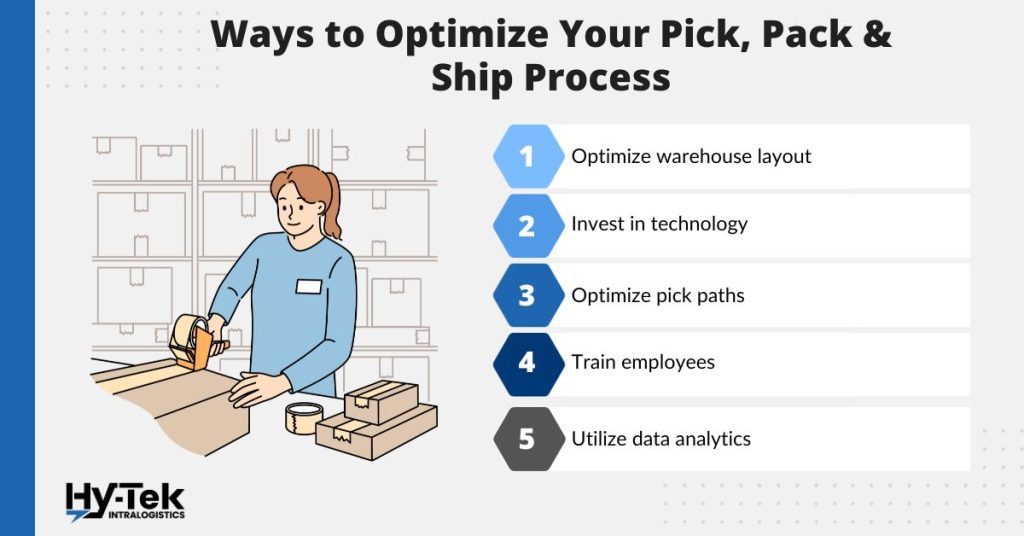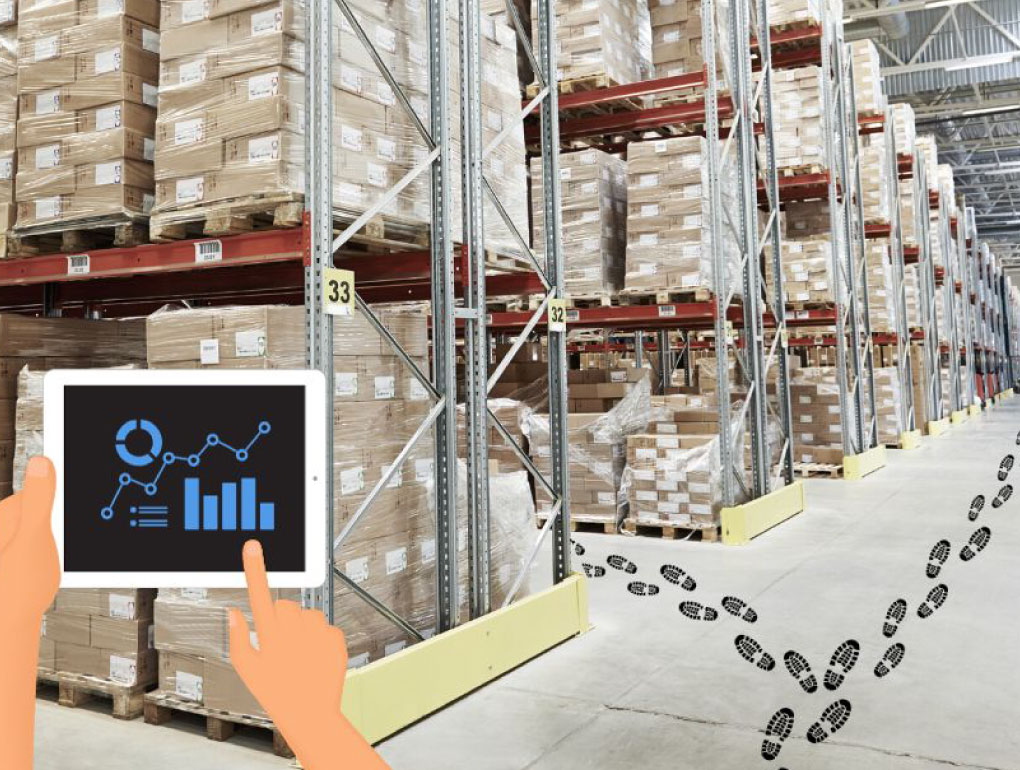In e-commerce, efficient order fulfillment is crucial to ensure customer satisfaction and business success. One of the most effective methods for streamlining the order fulfillment process is the pick, pack, and ship process. We will explore the ins and outs of this process, including order picking and packing, pick-to-box strategies, the benefits of pick-and-pack warehousing, and much more.
Table of Contents
- Pick and Pack Definition
- Order Pick and Pack Methods
- The Role of Technology in Pick and Pack Warehousing
- Benefits
- How to Optimize the Pick, Pack, and Ship Process
- Common Challenges and Solutions
- Cost Implications of Inefficient Picking and Packing
Pick and Pack Definition
In warehousing, pick and pack is a fulfillment method that refers to picking the ordered items from storage and packing them in the most efficient manner in preparation for shipping.

Picking refers to the act of selecting the right quantities of products from the warehouse storage, while packing involves placing the selected items into shipping boxes along with appropriate packing materials and packing slip, labeling them, and preparing them for shipment.
This fulfillment method works best for eCommerce because orders are typically smaller and need to be packed for delivery.
So, you might ask, “How is the picking and packing process different from other fulfillment methods?”
In contrast to the replenishment process for retail stores or wholesalers, which involves preparing entire cases or pallets for shipment, pick and pack operations entail selecting precise quantities of specific items and subsequently packaging them to fulfill customized orders.
Pick and Pack Methods
The pick-and-pack process is a crucial step in the overall order fulfillment cycle and can be handled in-house or by a third-party logistics provider.
To optimize the picking and packing process in-house, there are many order-picking methods that can be deployed in a warehouse. Here are four common methods used for picking goods:
- Piece picking: This straightforward method involves employees handpicking each item for orders as they are received. It is suitable for small-scale operations with low order volumes.
- Batch picking: Orders are picked in batches instead of individually, improving efficiency by reducing the number of trips required to the warehouse locations.
- Zone picking: The warehouse is divided into zones, and employees are assigned to specific areas. Items are picked from these assigned areas and passed to another zone if the order requires items from multiple zones.
- Wave picking: This method combines batch picking and zone picking. Employees stay in designated areas but pick orders in batches within those zones, further increasing efficiency.
Now, of course, there are pros and cons to each type of picking method, but there are certain applications and industries where one pick method works better than another.
The term “pick-to-box” is often referenced in discussions about the picking and packing process. In this method, items are chosen from inventory shelves and immediately placed into designated boxes for individual customer orders, bypassing the step of transferring from a tote to an outbound box. This approach streamlines the packing process, ensuring accurate and efficient packaging tailored to the unique requirements of each order.
If you don’t have the resources or the scale to implement this fulfillment method in-house, you can utilize a pick and pack service. The companies that offer these services are third-party logistics providers (3PL).
The Role of Technology in Pick and Pack Warehousing
Technology and automation tools play vital roles in optimizing the pick and pack process. According to 4 experts who predict the future of warehousing, here’s 5 technologies that will revolutionize the way we pick and pack:
- Internet of Things (IoT)
- Big data, predictive analytics & visualization
- Blockchain
- Automation with robotics
- AI & Digitalization
A crucial piece to any picking operation is a warehouse management system (WMS) which is used to track inventory, manage order-picking routes, and streamline the overall process. Barcode scanning, automated conveyor systems, and robotics can further enhance efficiency and accuracy in picking and packing operations.
Benefits of Pick and Pack Warehousing
Implementing a pick and pack warehousing strategy offers several benefits for businesses:
- Efficiency: The pick and pack process streamlines order fulfillment by eliminating the need for collecting goods from different storage facilities and sending them for packing and labeling.
- Increased customer satisfaction: Accurate and timely order fulfillment leads to satisfied customers who receive their orders without damage and on time.
- Shorter turnaround time: Well-managed handling techniques enable faster shipment delivery, reducing the time it takes for products to reach their destination.
- Greater cost-effectiveness: Pick and pack procedures are optimized to handle orders of any size, eliminating minimum order charges. Additionally, the consolidation of picking and packing in one location reduces labor and time, resulting in a streamlined process with minimal waste.
How to Optimize the Pick, Pack, and Ship Process
To ensure the pick, pack, and ship process operates at its highest efficiency, businesses can implement the following strategies:

- Optimize warehouse layout: Organize the warehouse layout to minimize travel time between picking locations, reducing the time it takes to fulfill orders.
- Invest in technology: Implement barcode scanning, automated systems, pick and pack software/warehouse management software, and robotics to improve accuracy and speed in the picking and packing process.
- Pick Path Optimization: Reducing the amount of travel between picking locations and reducing overlap between pickers to create the most efficient picking route.
- Train employees: Provide comprehensive training to warehouse staff to ensure they understand the process, including proper picking process and packaging guidelines.
- Utilize data analytics: Analyze data from the pick and pack process to identify bottlenecks, improve efficiency, and make data-driven decisions.
Common Challenges and Solutions
While the pick, pack, and ship process offers numerous benefits, it also comes with its challenges. Here are some common challenges and their corresponding solutions:
- Inventory management: Accurate inventory management is crucial to ensure the availability of products for picking. Implementing a robust inventory management system and conducting regular audits can help address this challenge.
- Order accuracy: Mistakes in picking and packing can lead to incorrect shipments. Proper training, quality control processes, and the use of technology can help improve order accuracy.
- Peak season demands: During peak seasons, such as holidays, order volumes can significantly increase. To handle this, businesses can hire temporary staff, implement flexible schedules, and plan for increased inventory levels.
The Cost Implications of Inefficient Warehousing
Efficient warehousing directly impacts overall business performance, extending beyond cost reduction. A swift and effective warehouse translates to satisfied customers, repeat purchases, and positive reviews.
Conversely, operational delays cause backorders, customer frustration, brand damage, and lost sales. Warehouse efficiency is a strategic, not just tactical, investment.
Here are just a few of the cost implications of inefficient warehouse operations:
- Excessive overhead costs from under-utilized space
- Financial losses due to damaged or misplaced products
- Negative impact of delayed orders on business
- Wasted resources and unnecessary expenses from inefficient space usage
- Financial losses from product damage or misplacement
- Risk of losing business to more responsive competitors due to delivery inefficiencies
Optimizing the warehouse picking process minimizes order processing times, speeding up order fulfillment and reducing reserve storage needs. Employing advanced picking technology like goods-to-person solutions or a warehouse management system enhances accuracy.
Conclusion
The pick, pack, and ship process is a critical component of efficient order fulfillment in the e-commerce industry. By implementing the right strategies, utilizing technology, and optimizing the warehouse layout, businesses can streamline their operations, improve customer satisfaction, and ultimately drive success. Remember, the key to success lies in careful planning, continuous improvement, and a commitment to delivering exceptional customer experiences through efficient pick and pack warehousing.
Now that you have a comprehensive understanding of the pick, pack, and ship process, it’s time to put your knowledge into action and optimize your order fulfillment operations for maximum efficiency and customer satisfaction.





